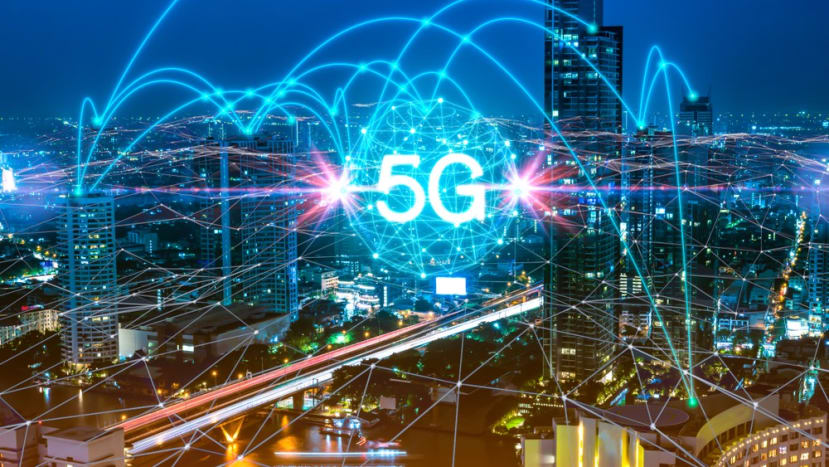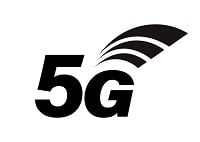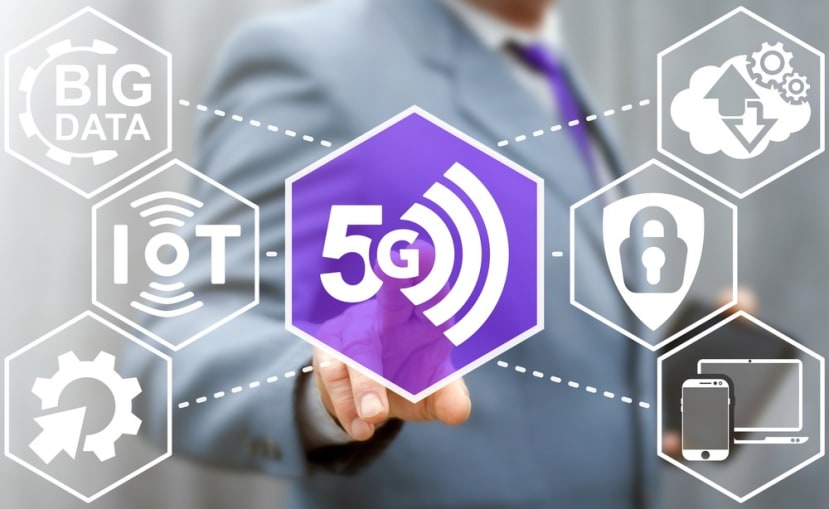5 +1 things driving IIoT and 4.0: wireless connectivity (III)
Follow articleHow do you feel about this article? Help us to provide better content for you.
Thank you! Your feedback has been received.
There was a problem submitting your feedback, please try again later.
What do you think of this article?
The second and this third part of the article are giving a summary of several specific wireless standards.
You can sort wireless technologies into categories by using their derivation:
-
IEEE 802 technologies
-
802.11 technologies (WLAN)
-
802.15 technologies (WPAN)
-
802.15.1 technologies (Bluetooth)
-
802.15.4 technologies
-
-
-
LPWAN technologies
-
Cell phone technologies
The second part has covered all IEEE 802 technologies. Part three is covering LPWAN and cell phone technologies.
LPWAN protocols
Low Power Wide Area Network (LPWAN) standards have been developed for transporting sensor data into the IoT without the legacy ballast of IEEE 802 wireless networks or cellular radio. Low power consumption allowing self-sufficient battery driven (or energy harvesting) devices is a crucial feature of LPWAN technologies. Other central aspects are long-range radio (some km distance), many simultaneous devices and low price. The low data rate and latency are most acceptable for typical applications.
LPWAN protocols have adopted resource-efficient internet standards like MQTT (using TCP) and CoAP (Constrained Application Protocol, using UDP), which can run on small controllers and have a minimum data overhead.
I will not include EnOcean, which is classified as LPWAN but does not cover wide ranges and which is mainly a technology for building automation.
LoRaWAN
| typical data rate | Frequencies | typ. range indoor | max. range |
|---|---|---|---|
|
0.3 to 50 kbps |
868 MHz and 433 MHz (Europe) 904 MHz (USA) 915 MHz (Australia) 430 MHz (Asia) |
2 - 15 km |
50 km |
| typical latency | security | low power | mobility (roaming) |
| highly dependent on node density and network layout but typically several 100 ms | |||
| robustness | coexistence | numb. nodes | |
| availability | ease of install. | cost | |
|
|
LoRaWAN is a 2015 defined network standard based on the LoRa radio technology invented by Semtech. Nodes transmit their data to gateways (star topology) which communicate with LoRa servers (e.g. in the cloud). Unlike its LPWAN competitors, LoRaWAN is not run by single providers, but the user can implement the infrastructure. Such private networks make it harder to install but give much more freedom and no cost for the data volume. Users who do not like to establish their private network can use public networks like "MachineQ" or "The Things Network".
LoRa uses free of charge sub-GHz frequency bands and thus has seldom coexistence problems. Due to the low data rates, listen-before-talk-principle and the proprietary "Chirp Spread Spectrum" modulation, it can offer industrial-grade robustness. A gateway can connect to up to 1000 nodes. The excellent sensitivity of down to -137 dBm allows operation in parts of a building that can hardly be reached by Wi-Fi or BT.
The duty cycle limits of the used frequency bands, on the other hand, do limit the data volume.
SigFox
| typical data rate | Frequencies | typ. range indoor | max. range |
|---|---|---|---|
|
100 bps (Europe) to 600 bps |
868 MHz (Europe) 902 MHz (USA) |
10 km |
40 km |
| typical latency | security | low power | mobility (roaming) |
| / | |||
| robustness | coexistence | numb. nodes | |
| availability | ease of install. | cost | |
|
|
SigFox is a 2009 founded French company that is running a propriety network using a proprietary protocol. It uses sub-GHz frequency bands. SigFox is continuously expanding its network to a worldwide LPWAN, but users must ensure that their region is already covered by the network. The low monthly fees are possible because customers are limited to tiny data packages per day (e.g. 140 uplink messages per day at the low-cost rate).
Due to the protocol's propriety character, you can only use devices from SigFox or one of their partners.
The ultra-low data rate (100 bps in Europe) allows a robust transmission over high distances. But on the other hand, there are not many applications left in industrial automation for which such a small data rate and limitation of daily messages is sufficient. Therefore this technology might not have a substantial impact on I4.0.
NB-IoT
| typical data rate | Frequencies | typ. range indoor | max. range |
|---|---|---|---|
|
about 50 kbps |
800/900/1800/2600 MHz |
1 km |
>10 km |
| typical latency | security | low power | mobility (roaming) |
| 1 to several seconds | |||
| robustness | coexistence | numb. nodes | |
| availability | ease of install. | cost | |
|
|
The "LTE Advanced Pro" extension of the LTE standard was developed and published by 3GPP as a technology specifically aiming at IoT applications. Therefore it was called NarrowBand-IoT or NB-IoT. Using the licenced frequency band, there are no duty cycle limitations like with LoRa or SigFox. That means applications that require more frequent communications will be better served by NB-IoT. The service coverage is much better than SigFox, as existing LTE infrastructure can be used for the NB-IoT network. This also increases the possible connection density and indoor coverage.
NB-IoT devices can be operated by battery for several years. Although 3GPP also aimed at low cost, the price level for available components is higher compared to LoRa components.
5G
| typical data rate | Frequencies | typ. range indoor | max. range |
|---|---|---|---|
|
up to 20 Gbps |
600 MHz up to 39 GHz |
1 km |
>10 km |
| typical latency | security | low power | mobility (roaming) |
| can be less than 1 ms with URLLC | |||
| robustness | coexistence | numb. nodes | |
| availability | ease of install. | cost | |
|
|
5G is the successor of 4G (LTE) in cellular radio technology. It puts a focus on M2M communication and excels LTE in low energy consumption and data rates.
Typically low energy is contradictory to high data rates. But 5G's "Network Slicing" technology allows to run networks with different features on the same physical infrastructure and to fulfil conflicting demands of various applications.
5G offers three basic services:
- xMBB (Extreme Mobile Broadband) for massive data volumes and high data throughput
- mMTC (Massive Machine-Type Communication) with optimised energy consumption and substantial quantities of connected devices (sensor, actuators or machines)
- uMTC (Ultra-Reliable / Mission-Critical MTC) and URLLC (Ultra-Reliable Low Latency Communication) for communication with high reliability and minimum latency
While mMTC is in direct competition to BT6, URLLC brings unreached reliability and latency values and is comparable to wired TSN ethernet and offers deterministic network traffic. This will possibly be a key feature for factory automation and safety applications.
This can only be realised in non-public networks. Customers can set up their network infrastructure and pay for the use of licensed frequencies on a defined location. Due to licensed frequency bands' nature, the customer exclusively uses his paid frequency band and will have an interference-free medium. If the user cannot set up the expensive 5G infrastructure, it is also possible to pay for the use of a provider's infrastructure and still profit from the exclusive use of paid channels for a specific location.
5G also comes with innovative true MIMO definitions and even defines beamforming technology where the base station focuses the HF energy in the connected device's direction. This minimises interference. The connected devices use beamtracking technology for cleanest signal retention. Beamforming and beamtracking are working together to achieve the cleanest possible signal to each device and reduce inter-site interference.
The 5G technology is by far the most innovative wireless technology for I4.0 applications. Its only downside is the lack of availability and high cost (current market).
This brings us to the end of the "5 +1 things driving IIoT and 4.0: wireless connectivity" article. As said at the end of part (II), please note that this summary is not a complete list of existing technologies. Others are trying to get their stake from the industrial automation market, like ANT from Garmin or KNX RF, Wi-SUN or Thread, to name just some of them. You are kindly invited to add a comment if you have the feeling that we all should learn about another technology.
The articles covering this series include:
Part 1 - The specific challenges for wireless communication in an industrial environment
Part 2 - Covers all IEEE 802 technologies and is then followed by this article covering LPWAN and cell phone technologies






